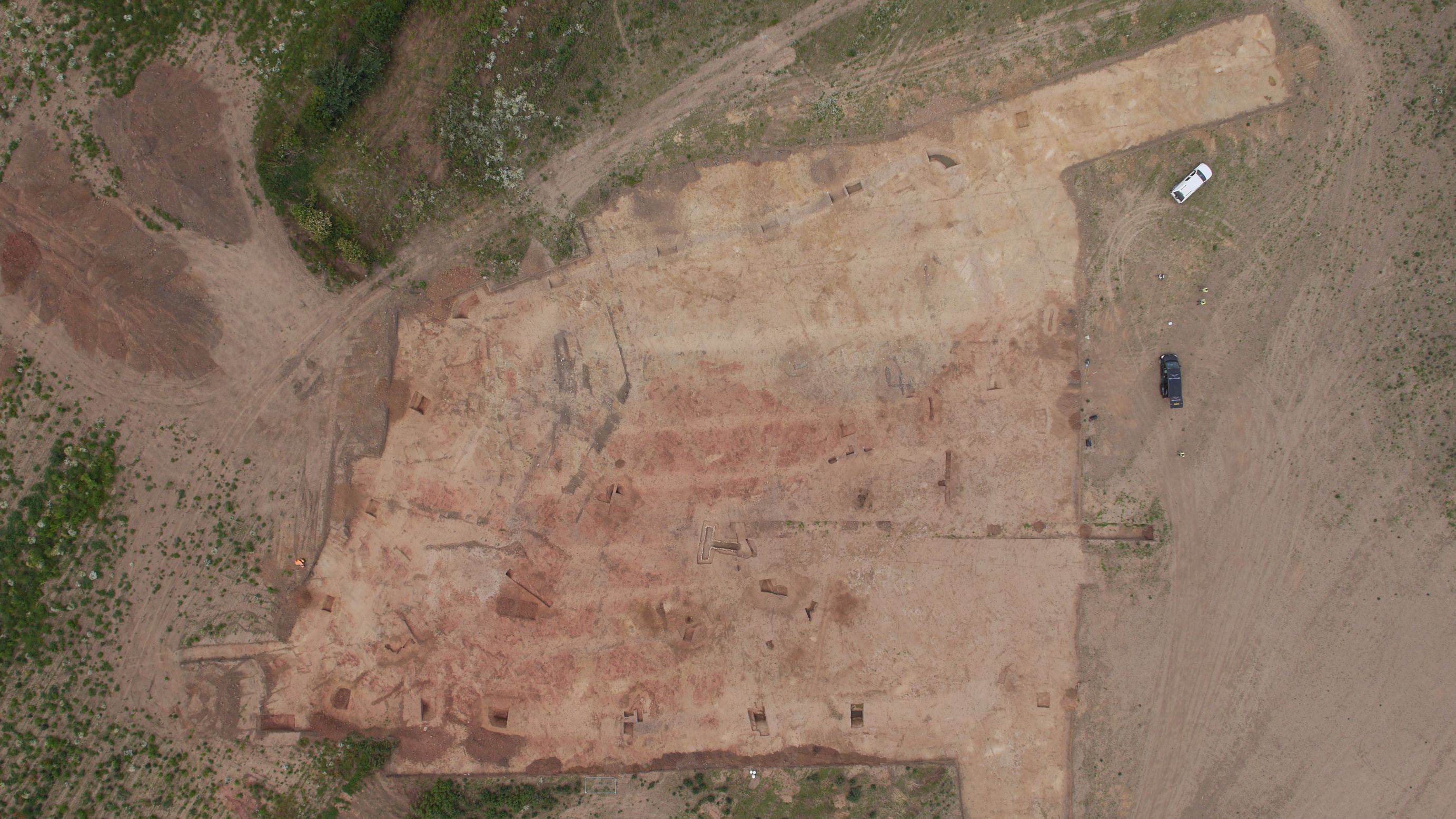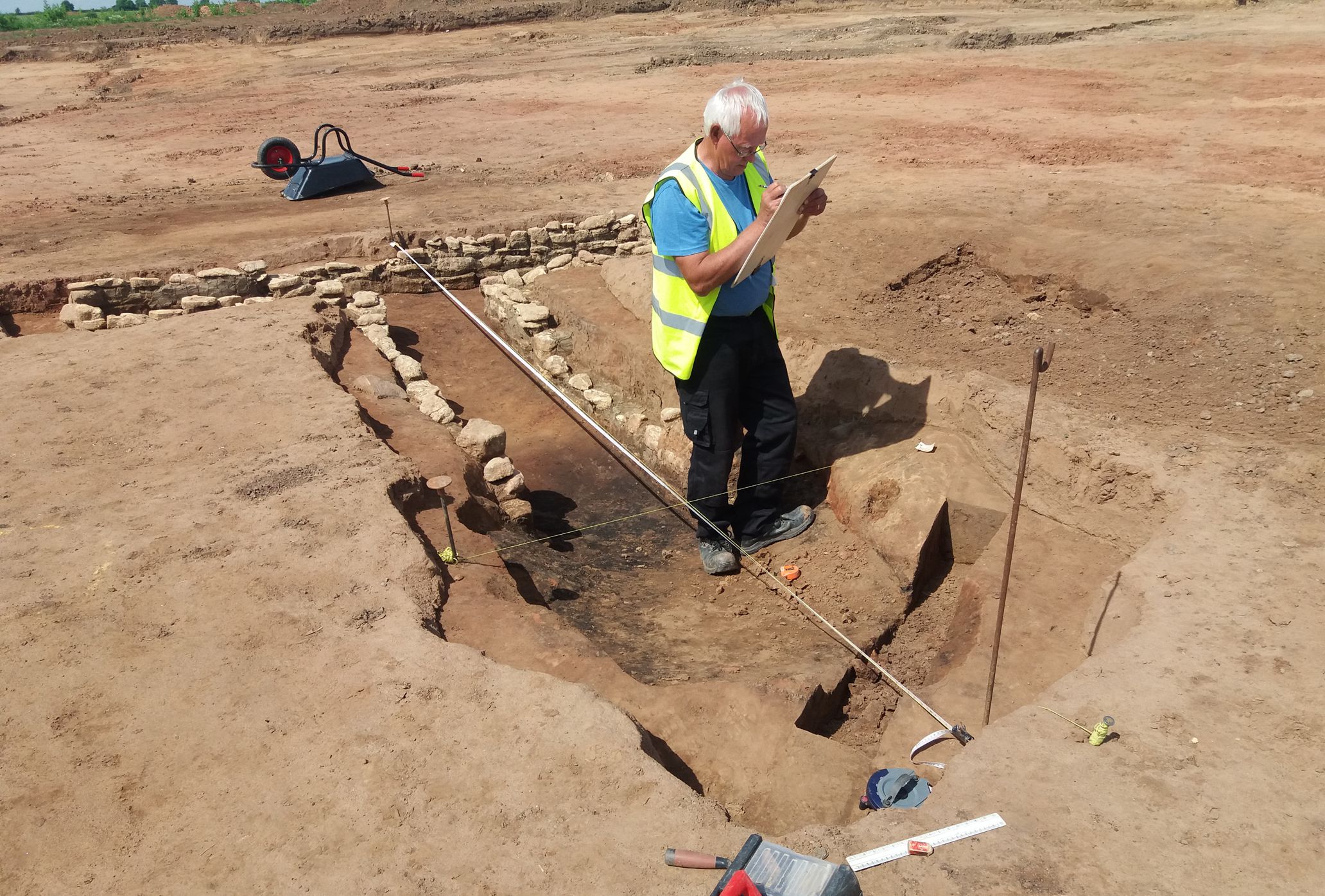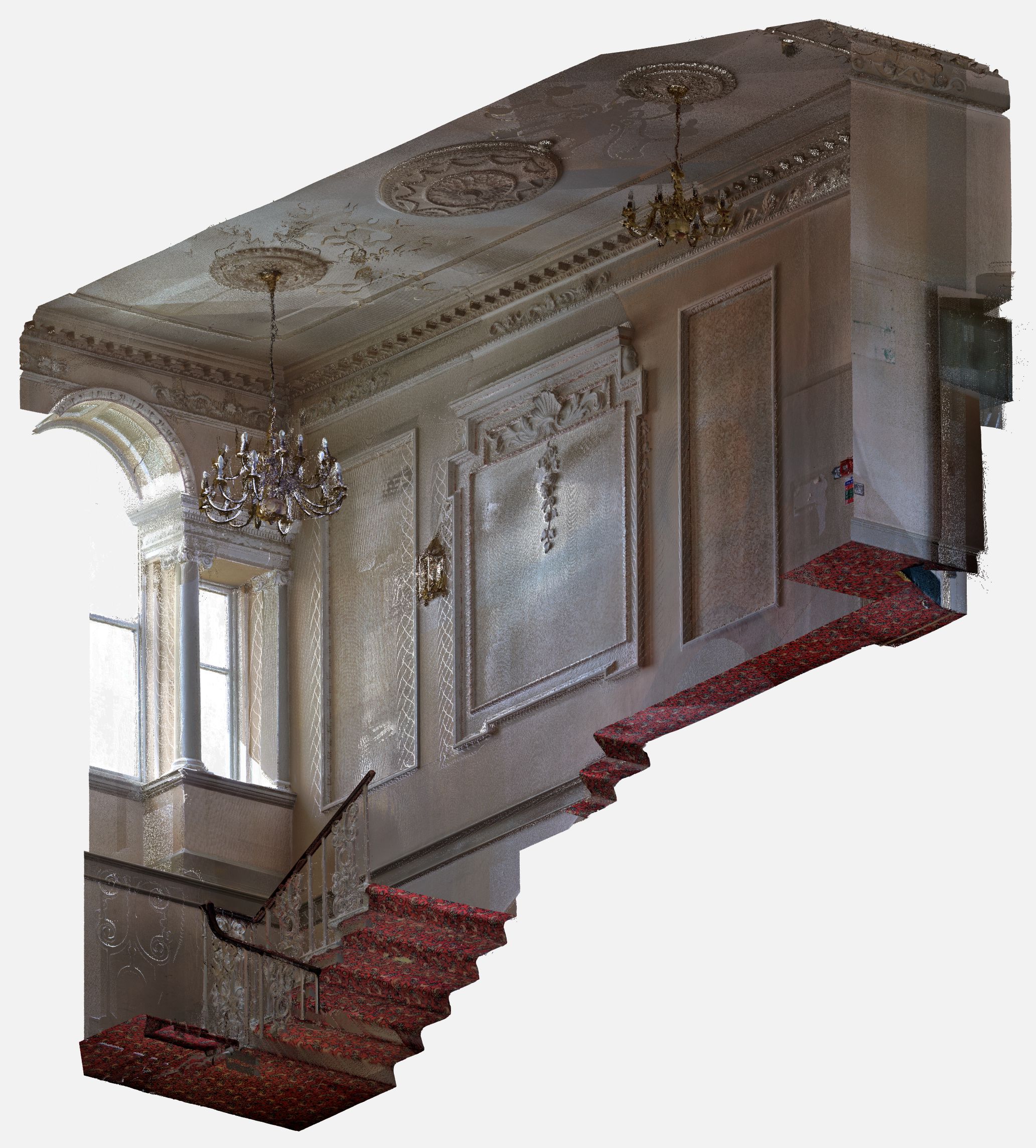
Wessex Archaeology’s Phil Weston and Lucy Dawson were invited to talk at this year’s South Yorkshire Archaeology Day, which took place on Saturday 18 November in Sheffield.
Phil set the ball rolling with his talk about our recent excavations at Rossington Inland Port, Doncaster. The excavations at Rossington targeted areas within a 125 hectare parcel of land, affording us the opportunity to really explore an agricultural Romano-British landscape, characterised by field boundaries, enclosures, trackways and areas of settlement and industrial activity. Our aim was to chart the development of the field system and trackways and to characterise the nature of the areas of settlement and industry.

Our excavations revealed roundhouses of 1st−2nd century date which probably had Iron Age antecedents; an enclosure, truncated by the railway, that, given the large assemblage of 2nd−3rd-century pottery, had clearly been the focus of domestic settlement as well as producing and working lead; and, the remains of a large enclosure within which were a corn dryer and the bases of 19 ovens or kilns. Several fragments of quernstone were recovered from the enclosure suggesting crop processing, again dating to the 2nd−3rd centuries.
In the afternoon Lucy presented the results of recent works carried out by the built heritage team at Ardsley House, Barnsley. Ardsley House was built by Richard Micklethwait in 1773, with subsequent additions through the 19th century, creating a very comfortable country house. The house was sold in the late 1960s, and refurbished and extended to create a hotel which opened in the early 1970s. Continued extension and refurbishment works at the hotel throughout the 1980s and 1990s meant further damage, unfortunately, was inflicted on the historic fabric of the former house.

The team produced an archaeological assessment and building appraisal to accompany the client’s planning application for demolition and redevelopment of the site. Planning permission for the scheme at the site was approved with archaeological conditions. The team then went back to carry out the mitigation works in the form of historic building recording to a Historic England Level 3−4, and subsequent watching brief during the soft strip and demolition works. The recording works included detailed laser scanning and photogrammetry of rooms where historic plasterwork had been retained.
The day was a great success and we really enjoyed all the other speakers that contributed to the day. Many thanks to South Yorkshire Archaeology Service for asking us to participate; we’re already looking forward to next year, when we hope we’ll be able to partake again.